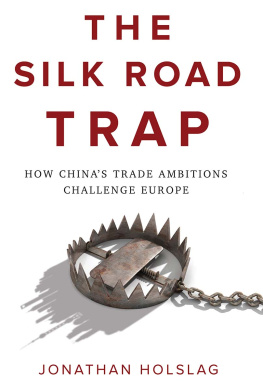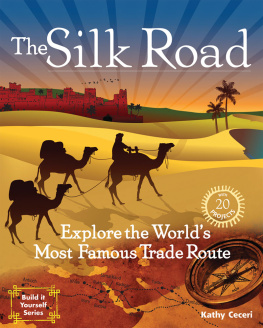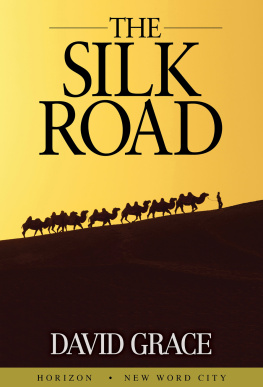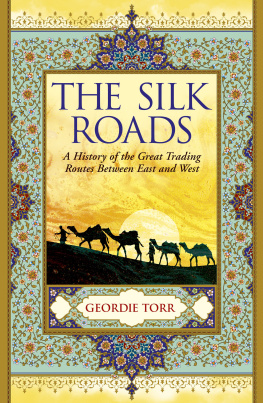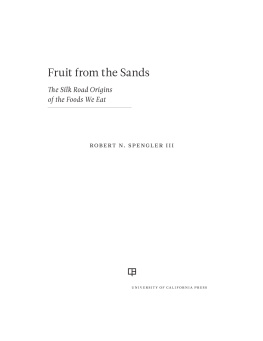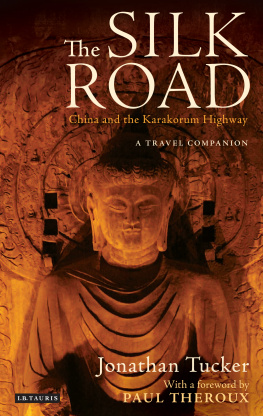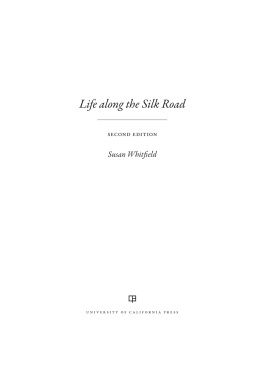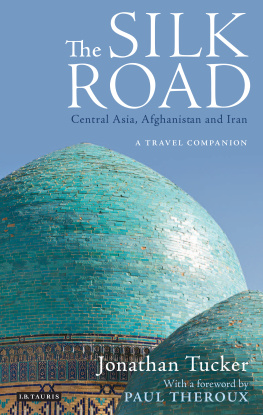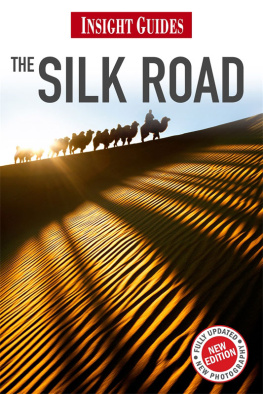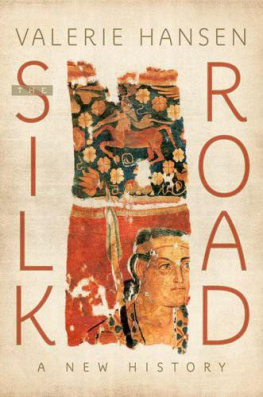
Oxford University Press is a department of the University of Oxford.
It furthers the Universitys objective of excellence in research, scholarship, and education by publishing worldwide.
Oxford New York
Auckland Cape Town Dar es Salaam Hong Kong Karachi
Kuala Lumpur Madrid Melbourne Mexico City Nairobi
New Delhi Shanghai Taipei Toronto
With offices in
Argentina Austria Brazil Chile Czech Republic France Greece
Guatemala Hungary Italy Japan Poland Portugal Singapore
South Korea Switzerland Thailand Turkey Ukraine Vietnam
Oxford is a registered trademark of Oxford University Press
in the UK and certain other countries.
Published in the United States of America by
Oxford University Press
198 Madison Avenue, New York, NY 10016
Oxford University Press 2013
All rights reserved. No part of this publication may be reproduced, stored in a retrieval system, or transmitted, in any form or by any means, without the prior permission in writing of Oxford University Press, or as expressly permitted by law, by license, or under terms agreed with the appropriate reproduction rights organization. Inquiries concerning reproduction outside the scope of the above should be sent to the Rights Department, Oxford University Press, at the address above.
You must not circulate this work in any other form, and
you must impose the same condition on any acquirer.
Library of Congress Cataloging-in-Publication Data
Millward, James A., 1961
The Silk Road : a very short introduction / James A. Millward.
p. cm.
Includes bibliographical references and index.
ISBN 978-0-19-978286-4 (pbk. : alk. paper)
1. Silk RoadHistory. 2. Silk RoadCivilization.
3. EurasiaCommerceHistory. 4. Trade routesEurasiaHistory.
5. Asia, CentralHistory. 6. Asia, CentralCivilization. I. Title.
DS33.1.M55 2013
958dc23 2012036337
1 3 5 7 9 8 6 4 2
Printed in Great Britain
by Ashford Colour Press Ltd., Gosport, Hants.
on acid-free paper
Very Short Introductions available now:
ADVERTISING Winston Fletcher
AFRICAN HISTORY John Parker and Richard Rathbone
AGNOSTICISM Robin Le Poidevin
AMERICAN POLITICAL PARTIES AND ELECTIONS L. Sandy Maisel
THE AMERICAN PRESIDENCY Charles O. Jones
ANARCHISM Colin Ward
ANCIENT EGYPT Ian Shaw
ANCIENT PHILOSOPHY Julia Annas
ANCIENT WARFARE Harry Sidebottom
ANGLICANISM Mark Chapman
THE ANGLO-SAXON AGE John Blair
ANIMAL RIGHTS David DeGrazia
ANTISEMITISM Steven Beller
THE APOCRYPHAL GOSPELS Paul Foster
ARCHAEOLOGY Paul Bahn
ARCHITECTURE Andrew Ballantyne
ARISTOCRACY William Doyle
ARISTOTLE Jonathan Barnes
ART HISTORY Dana Arnold
ART THEORY Cynthia Freeland
ATHEISM Julian Baggini
AUGUSTINE Henry Chadwick
AUTISM Uta Frith
BARTHES Jonathan Culler
BESTSELLERS John Sutherland
THE BIBLE John Riches
BIBLICAL ARCHEOLOGY Eric H. Cline
BIOGRAPHY Hermione Lee
THE BOOK OF MORMON Terryl Givens
THE BRAIN Michael O'Shea
BRITISH POLITICS Anthony Wright
BUDDHA Michael Carrithers
BUDDHISM Damien Keown
BUDDHIST ETHICS Damien Keown
CAPITALISM James Fulcher
CATHOLICISM Gerald O'Collins
THE CELTS Barry Cunliffe
CHAOS Leonard Smith
CHOICE THEORY Michael Allingham
CHRISTIAN ART Beth Williamson
CHRISTIAN ETHICS D. Stephen Long
CHRISTIANITY Linda Woodhead
CITIZENSHIP Richard Bellamy
CLASSICAL MYTHOLOGY Helen Morales
CLASSICS Mary Beard and John Henderson
CLAUSEWITZ Michael Howard
THE COLD WAR Robert McMahon
COMMUNISM Leslie Holmes
CONSCIOUSNESS Susan Blackmore
CONTEMPORARY ART Julian Stallabrass
CONTINENTAL PHILOSOPHY Simon Critchley
COSMOLOGY Peter Coles
THE CRUSADES Christopher Tyerman
CRYPTOGRAPHY Fred Piper and Sean Murphy
DADA AND SURREALISM David Hopkins
DARWIN Jonathan Howard
THE DEAD SEA SCROLLS Timothy Lim
DEMOCRACY Bernard Crick
DESCARTES Tom Sorell
DESERTS Nick Middleton
DESIGN John Heskett
DINOSAURS David Norman
DIPLOMACY Joseph M. Siracusa
DOCUMENTARY FILM Patricia Aufderheide
DREAMING J. Allan Hobson
DRUGS Leslie Iversen
DRUIDS Barry Cunliffe
THE EARTH Martin Redfern
ECONOMICS Partha Dasgupta
EGYPTIAN MYTH Geraldine Pinch
EIGHTEENTH-CENTURY BRITAIN Paul Langford
THE ELEMENTS Philip Ball
EMOTION Dylan Evans
EMPIRE Stephen Howe
ENGELS Terrell Carver
ENGLISH LITERATURE Jonathan Bate
EPIDEMIOLOGY Roldolfo Saracci
ETHICS Simon Blackburn
THE EUROPEAN UNION John Pinder and Simon Usherwood
EVOLUTION Brian and Deborah Charlesworth
EXISTENTIALISM Thomas Flynn
FASCISM Kevin Passmore
FASHION Rebecca Arnold
FEMINISM Margaret Walters
FILM MUSIC Kathryn Kalinak
THE FIRST WORLD WAR Michael Howard
FORENSIC PSYCHOLOGY David Canter
FORENSIC SCIENCE Jim Fraser
FOSSILS Keith Thomson
FOUCAULT Gary Gutting
FREE SPEECH Nigel Warburton
FREE WILL Thomas Pink
FRENCH LITERATURE John D. Lyons
THE FRENCH REVOLUTION William Doyle
FREUD Anthony Storr
FUNDAMENTALISM Malise Ruthven
GALAXIES John Gribbin
GALILEO Stillman Drake
GAME THEORY Ken Binmore
GANDHI Bhikhu Parekh
GEOGRAPHY John Matthews and David Herbert
GEOPOLITICS Klaus Dodds
GERMAN LITERATURE Nicholas Boyle
GERMAN PHILOSOPHY Andrew Bowie
GLOBAL CATASTROPHES Bill McGuire
GLOBAL WARMING Mark Maslin
GLOBALIZATION Manfred Steger
THE GREAT DEPRESSION AND THE NEW DEAL Eric Rauchway
HABERMAS James Gordon Finlayson
HEGEL Peter Singer
HEIDEGGER Michael Inwood
HIEROGLYPHS Penelope Wilson
HINDUISM Kim Knott
HISTORY John H. Arnold
THE HISTORY OF ASTRONOMY Michael Hoskin
THE HISTORY OF LIFE Michael Benton
THE HISTORY OF MEDICINE William Bynum
THE HISTORY OF TIME Leofranc Holford-Strevens
HIV/AIDS Alan Whiteside
HOBBES Richard Tuck
HUMAN EVOLUTION Bernard Wood
HUMAN RIGHTS Andrew Clapham
HUME A. J. Ayer
IDEOLOGY Michael Freeden
INDIAN PHILOSOPHY Sue Hamilton
INFORMATION Luciano Floridi
INNOVATION Mark Dodgson and David Gann
INTELLIGENCE Ian J. Deary
INTERNATIONAL MIGRATION Khalid Koser
INTERNATIONAL RELATIONS Paul Wilkinson
ISLAM Malise Ruthven
ISLAMIC HISTORY Adam Silverstein
JOURNALISM Ian Hargreaves
JUDAISM Norman Solomon
JUNG Anthony Stevens
KABBALAH Joseph Dan
KAFKA Ritchie Robertson
KANT Roger Scruton
KEYNES Robert Skidelsky
KIERKEGAARD Patrick Gardiner
THE KORAN Michael Cook
LANDSCAPES AND CEOMORPHOLOGY Andrew Goudie and Heather Viles
LAW Raymond Wacks
THE LAWS OF THERMODYNAMICS Peter Atkins
LEADERSHIP Keth Grint
LINCOLN Allen C. Guelzo
LINGUISTICS Peter Matthews
LITERARY THEORY Jonathan Culler
LOCKE John Dunn
LOGIC Graham Priest
MACHIAVELLI Quentin Skinner
MARTIN LUTHER Scott H. Hendrix
THE MARQUIS DE SADE John Phillips
MARX Peter Singer
MATHEMATICS Timothy Gowers
THE MEANING OF LIFE Terry Eagleton
MEDICAL ETHICS Tony Hope
MEDIEVAL BRITAIN John Gillingham and Ralph A. Griffiths
MEMORY Jonathan K. Foster
MICHAEL FARADAY Frank A. J. L. James
MODERN ART David Cottington
MODERN CHINA Rana Mitter
MODERN IRELAND Senia Paseta
MODERN JAPAN Christopher Goto-Jones
MODERNISM Christopher Butler
MOLECULES Philip Ball
Next page

